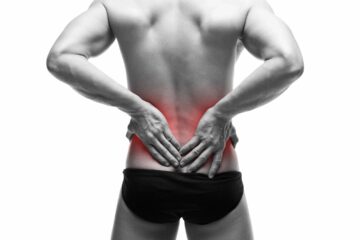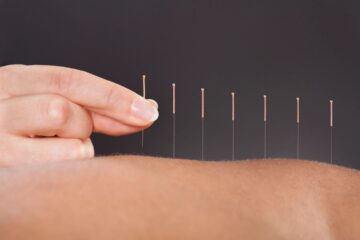Acupuncture for Back Pain: A Comprehensive Guide
Key Points
- Prevalence and Impact: Back pain affects nearly 80% of people at some point, significantly impacting daily life and mental health.
- Acupuncture as an Option: Research suggests acupuncture may provide short-term relief for chronic back pain, though its benefits compared to sham treatments are debated.
- Mechanisms: It may work by releasing endorphins, improving blood flow, and modulating pain perception in the brain.
- Safety and Accessibility: Acupuncture is generally safe with minimal side effects when performed by qualified practitioners, and Medicare covers it for chronic low-back pain.
- Controversy: Some studies indicate a placebo effect, as sham acupuncture can be as effective as real acupuncture, but both often outperform standard care.
Overview of Back Pain and Acupuncture
Back pain is a widespread issue that can disrupt daily activities and mental well-being. Back injuries cause 10 million hospital/clinic visits per year in the US. For those seeking alternatives to medications or surgery, acupuncture, a practice rooted in Chinese Medicine (CM), offers a non-invasive option. It involves inserting thin needles into specific body points to alleviate pain, with growing evidence supporting its use, particularly for chronic back pain.
How Acupuncture May Help
Acupuncture may relieve back pain by stimulating the release of endorphins, the body’s natural painkillers, and improving blood flow to reduce inflammation. It also appears to influence brain regions involved in pain perception, making it a potential treatment for both acute and chronic back pain. There are many other theories from a western medical perspective of how acupuncture works, none of them can fully describe how acupuncture works in the body. It is likely that it is a combination of all the theories that would get us to the core of how acupuncture truly works in the body.
What to Expect
During an acupuncture session, a practitioner inserts sterile needles into specific points, often causing minimal discomfort. Sessions typically last up to an hour, with 6-8 treatments recommended for noticeable results. It’s generally safe, with minor side effects like bruising, but should be performed by a certified professional. Usually the practitioner will recommend continuing with acupuncture even when the pain is gone in order to keep the pain away.
Is It Right for You?
Acupuncture may benefit those with chronic back pain who haven’t found relief through conventional treatments. It can be combined with therapies like physical therapy for enhanced results. Always consult a healthcare provider to ensure it’s appropriate for your condition.
Acupuncture for Back Pain: A Comprehensive Guide
Introduction
Back pain is one of the most common health issues, affecting nearly 8 out of 10 people at some point in their lives WebMD: Back Pain and Acupuncture. It ranks among the top reasons for seeking medical care and can profoundly impact daily activities, work productivity, and mental health. As conventional treatments like medication, physical therapy, or surgery sometimes fall short, many are turning to alternative therapies. Acupuncture, a key practice in Traditional Chinese Medicine (TCM), has gained popularity as a non-invasive, drug-free approach to managing back pain. Research suggests it may offer relief, particularly for chronic cases, making it an appealing option for those seeking holistic pain management Healthline: Acupuncture for Back Pain.
Understanding Back Pain
Back pain can stem from various causes, including muscle strains, herniated discs, poor posture, and degenerative conditions like osteoarthritis. It is classified into two types: acute and chronic. Acute back pain arises suddenly and typically resolves within days to weeks with rest or basic care. Chronic back pain persists for 12 weeks or longer, often significantly affecting quality of life Mayo Clinic: Acupuncture. Beyond physical discomfort, chronic back pain can lead to mental health challenges such as stress, anxiety, and depression, underscoring the need for comprehensive treatment approaches Medical News Today: Acupuncture for Back Pain.
| Type of Back Pain | Duration | Common Causes | Impact |
|---|---|---|---|
| Acute | Days to weeks | Muscle strain, injury | Temporary disruption of daily activities |
| Chronic | 12+ weeks | Herniated discs, osteoarthritis | Persistent pain, mental health challenges |
What Is Acupuncture?
Acupuncture, originating over 3,000 years ago in CM, involves inserting thin, sterile needles into specific points on the body, known as acupoints, to restore balance and promote healing. In CM, health depends on the balanced flow of qi (energy) through pathways called meridians. Disruptions in qi flow are believed to cause pain or illness, and acupuncture aims to correct these imbalances PubMed: Acupuncture for Chronic Low Back Pain. Modern science suggests acupuncture stimulates nerves, muscles, and connective tissue, triggering the release of endorphins and influencing brain areas involved in pain perception JAMA Internal Medicine: Acupuncture for Chronic Low Back Pain.
How Acupuncture Helps with Back Pain
Acupuncture may alleviate back pain through multiple mechanisms. It stimulates the release of endorphins, the body’s natural painkillers, reducing pain perception. It also enhances blood flow to the affected area, which can decrease inflammation and promote healing. Additionally, acupuncture may modulate brain regions responsible for processing pain, providing a neurological basis for its effects. These actions make it a potential treatment for both acute and chronic back pain Verywell Health: Acupuncture for Back Pain.
What the Research Says
Research on acupuncture for back pain shows promising but mixed results. A 2018 review of 12 studies involving 8,003 participants found acupuncture more effective than no treatment for back or neck pain, with 10 studies showing it outperformed sham acupuncture NIH: Acupuncture for Back Pain. A separate review of 22 studies reported short-term relief for chronic back pain, with greater pain improvement compared to sham treatments WebMD: Back Pain and Acupuncture. However, some studies suggest sham acupuncture can be as effective as real acupuncture, indicating a possible placebo effect. Both real and sham acupuncture often outperform standard care, such as medication or physical therapy alone JAMA Internal Medicine: Acupuncture for Chronic Low Back Pain. The National Institutes of Health (NIH) and Cleveland Clinic recognize acupuncture as a viable option for chronic low back pain, particularly when conventional treatments fail Cleveland Clinic: Acupuncture. The American College of Physicians recommends acupuncture as a first-line nondrug treatment for chronic low-back pain, supported by moderate-quality evidence NIH: Acupuncture for Back Pain.
| Study Type | Findings | Source |
|---|---|---|
| 2018 Review | Acupuncture more effective than no treatment; outperforms sham in some cases | NIH: Acupuncture for Back Pain |
| 22-Study Review | Short-term relief for chronic back pain; better than sham | WebMD: Back Pain and Acupuncture |
| ACP Guideline | First-line nondrug treatment for chronic low-back pain | NIH: Acupuncture for Back Pain |
What to Expect During a Session
A typical acupuncture session begins with a consultation to assess the patient’s condition and medical history. The practitioner then inserts thin, sterile needles into specific acupoints, often along the back, legs, or other areas related to the pain. Needles remain in place for 30 minutes, during which patients may feel mild tingling or warmth. Sessions, lasting up to an hour, are generally painless, with minimal discomfort during needle insertion. Acupuncture is safe when performed by a certified practitioner, with rare side effects like minor bruising or soreness Mayo Clinic: Acupuncture. A common treatment plan involves 1-2 sessions per week, with 6-8 sessions often needed for noticeable improvement, though some may require ongoing maintenance Mayo Clinic: Acupuncture.
Is Acupuncture Right for You?
Acupuncture may be particularly beneficial for individuals with chronic back pain who have not found relief through conventional treatments like physical therapy or medication. It’s also suitable for those seeking to avoid the side effects of pain medications or surgery. Since 2020, Medicare covers acupuncture for chronic low-back pain, reflecting its growing acceptance NIH: Acupuncture for Back Pain. Acupuncture can be combined with other therapies, such as physical therapy or chiropractic care, to enhance outcomes Harvard Health: Acupuncture for Chronic Pain. Always consult a healthcare provider to ensure acupuncture is appropriate for your condition, especially if you have pre-existing health issues or are taking medications.
Conclusion
Acupuncture offers a promising complementary or alternative therapy for managing back pain, particularly for chronic conditions. By stimulating endorphin release, improving blood flow, and modulating pain perception, it can enhance quality of life for those struggling with back pain. Seek treatment from a qualified practitioner and consult a healthcare provider to integrate acupuncture into a comprehensive pain management plan WebMD: Back Pain and Acupuncture.
Key Citations
- WebMD: Back Pain and Acupuncture Treatment Overview
- Healthline: Acupuncture for Back Pain Management
- Mayo Clinic: Acupuncture for Pain Relief
- Medical News Today: Acupuncture for Back Pain Benefits
- PubMed: Acupuncture for Chronic Nonspecific Low Back Pain
- JAMA Internal Medicine: Acupuncture for Chronic Low Back Pain
- Verywell Health: Acupuncture for Back Pain Relief
- NIH: Acupuncture for Back Pain In-Depth
- Cleveland Clinic: Acupuncture Services for Pain
- Harvard Health: Acupuncture for Chronic Pain Management
Please note: Nothing in this post is intended as a substitute for Western Medical care. Please consult your physician as a part of any healthcare choices made.


